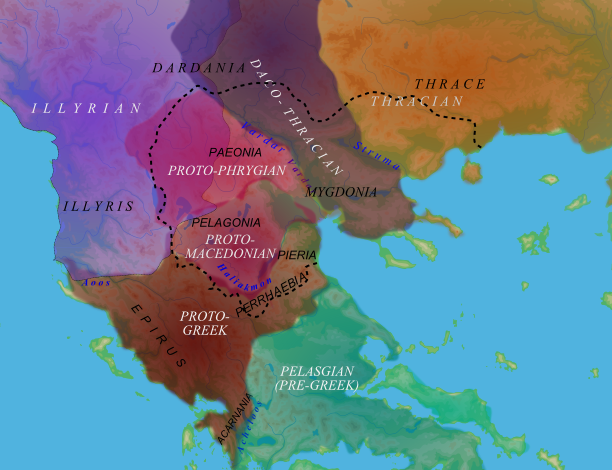I acknowledge that a seemingly better place for the following post is in the thread regarding Slavic words being found in Homeric Greek, but I thought it might be an interesting addition.
Homeric Slavic Definition
Kίον Kinisa To set (in place, in motion, etc.)
Kοτύλη Kotle Cup/Cauldron
Στείνω Stenka Groan/Moan/Yell/Audible Noise
Όδίτης Odi (go) Journey, Voyage
Έσθίω Jestivo Eat/Taste (still in Greek)
Βίῃ Ubie Beat by force
Δολιχός Dolgo Long/Lengthy
Oἶνος Vino Wine
Δαϝήρ Dever Brother in Law
Σϝεκυρός Svekor Father in Law
Σϝεκυρή Svekrva Mother in Law
Tείνω Tegni Stretch (still in Greek)
Aττα Ata Father
Mαῖα Majka Mother/Older woman
Δόμονδε Dom+onde House (to the,)
Aμαλός Malo Young/Youth
Σύν So With
Οδε Ovde Here
Λέγω Ley go Lay down/set down
Έἷσε Peysi Sing
Έρυκω V'raka In-hand/Hold
Aρείων Aren Good/Better
Πεζός Peshki On foot (in Greek)
Στείνω Stegni To confine/to press down
Tριβω Iztrigo Rub
Bάδην Vodi Advance/lead
Tί/Tii Oti Why/How
Mοῖρα Moia Mine (One's own)
It should be noted that some of these are still found in Greek, but it is really interesting that these words resemble Slavic words. I wonder if there is a way to tie this into a hypothetical Proto-Balto-Slavic tongue?
Homeric Slavic Definition
Kίον Kinisa To set (in place, in motion, etc.)
Kοτύλη Kotle Cup/Cauldron
Στείνω Stenka Groan/Moan/Yell/Audible Noise
Όδίτης Odi (go) Journey, Voyage
Έσθίω Jestivo Eat/Taste (still in Greek)
Βίῃ Ubie Beat by force
Δολιχός Dolgo Long/Lengthy
Oἶνος Vino Wine
Δαϝήρ Dever Brother in Law
Σϝεκυρός Svekor Father in Law
Σϝεκυρή Svekrva Mother in Law
Tείνω Tegni Stretch (still in Greek)
Aττα Ata Father
Mαῖα Majka Mother/Older woman
Δόμονδε Dom+onde House (to the,)
Aμαλός Malo Young/Youth
Σύν So With
Οδε Ovde Here
Λέγω Ley go Lay down/set down
Έἷσε Peysi Sing
Έρυκω V'raka In-hand/Hold
Aρείων Aren Good/Better
Πεζός Peshki On foot (in Greek)
Στείνω Stegni To confine/to press down
Tριβω Iztrigo Rub
Bάδην Vodi Advance/lead
Tί/Tii Oti Why/How
Mοῖρα Moia Mine (One's own)
It should be noted that some of these are still found in Greek, but it is really interesting that these words resemble Slavic words. I wonder if there is a way to tie this into a hypothetical Proto-Balto-Slavic tongue?



 Anything else you'd like to add you twat? Do you want to inform us of the "Greek" origin of the Thracian and Illyrians too? I mean, they have some words in common with Greek, so obviously they're Greek, right? Did you want to pull something else out of your arse? Tell me of the Greek origin of the whole world Aphimpolis, I really wanna hear it. Honestly, I'm done being patient with you guys. Nothing you say will ever have any credibility in my eyes, provide all the sources you want.
Anything else you'd like to add you twat? Do you want to inform us of the "Greek" origin of the Thracian and Illyrians too? I mean, they have some words in common with Greek, so obviously they're Greek, right? Did you want to pull something else out of your arse? Tell me of the Greek origin of the whole world Aphimpolis, I really wanna hear it. Honestly, I'm done being patient with you guys. Nothing you say will ever have any credibility in my eyes, provide all the sources you want.

Comment